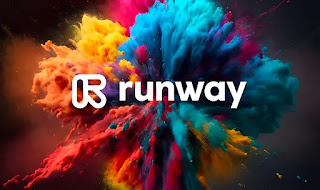VEED.IO: The Ultimate AI-Powered Video Editing Tool for Content Creators videography software
In today’s fast-paced digital world, video content is king. From social media platforms to websites and marketing campaigns, video has become one of the most powerful ways to engage with audiences. However, video editing can often be time-consuming and complicated, especially for those who aren't professional editors. This is where VEED.IO comes in—an AI-powered video editing tool that makes it easier than ever to create stunning videos in a matter of minutes.
What is VEED.IO?
VEED.IO is an online video editing platform designed to simplify the video editing process while offering powerful features. It combines user-friendly design with cutting-edge AI tools to help creators, marketers, and businesses produce high-quality videos quickly and efficiently. Whether you're creating content for YouTube, Instagram, TikTok, or any other platform, VEED.IO has the tools you need to enhance your videos and make them stand out.
Key Features of VEED.IO
1. AI-Powered Tools
VEED.IO stands out for its AI-driven capabilities. These tools automate several parts of the video editing process, allowing you to focus more on creativity and less on the technical side. Some notable AI features include:
- Auto-Subtitles: VEED.IO automatically generates accurate subtitles for your videos, saving you hours of manual transcription work.
- Speech Recognition: The tool recognizes speech and transforms it into text, which is perfect for those who need captioned content for accessibility or social media.
- Background Noise Removal: If your video has distracting background noise, VEED.IO can remove it with just one click, ensuring your audio is crisp and clear.
- Auto-Scene Detection: VEED.IO’s AI can detect key moments in your video, making it easier to trim and edit without having to watch the entire footage.
2. Intuitive Interface
Even if you’ve never edited a video before, VEED.IO’s intuitive interface ensures a seamless editing experience. You can easily upload videos, drag and drop clips, and apply various edits with minimal effort. The platform’s design is simple enough for beginners but powerful enough for advanced users.
3. Customization Options
While VEED.IO simplifies the editing process, it doesn't limit your creativity. You can add text, stickers, filters, and transitions to your videos, ensuring they align with your brand or personal style. Additionally, the platform allows you to resize videos to fit different social media formats, ensuring that your videos look perfect whether they’re posted on Instagram Stories, TikTok, or YouTube.
4. Collaborative Features
VEED.IO also shines when it comes to collaboration. If you’re working on a team project or with clients, you can easily share your video edits with others. You can grant editing permissions, leave comments, and collaborate in real-time, making it an excellent choice for businesses and content creators who work in teams.
5. Cloud-Based and Accessible
Since VEED.IO is a cloud-based tool, there's no need to download or install any software. All you need is an internet connection, and you can access your projects from anywhere. This feature also makes it easy to work across devices—whether you’re using a laptop, desktop, or even a mobile device.
Why Choose VEED.IO?
1. Time-Saving AI Features
The AI-driven features such as auto-subtitles, speech recognition, and background noise removal make VEED.IO an incredibly time-efficient tool. These features help creators focus more on the message and content rather than the technical aspects of editing.
2. Affordable Pricing
VEED.IO offers flexible pricing plans to suit different needs. Whether you’re a hobbyist or a professional, there’s a plan for everyone. For those just starting out, VEED.IO offers a free version with basic features. However, the paid plans unlock more advanced tools and features, such as longer video durations, higher-quality exports, and access to premium effects.
3. Cloud-Based Convenience
Because VEED.IO operates entirely online, you can access your videos and projects from any device without worrying about storage space. This cloud-based model makes it easy to edit on the go and share your projects with collaborators instantly.
4. Excellent Customer Support
VEED.IO provides excellent customer support through its help center and live chat. Whether you’re stuck on a feature or need advice on how to optimize your videos, the team is quick to respond and helpful in resolving any issues.
Use Cases for VEED.IO
VEED.IO is versatile and can be used by various types of users. Here are some of the common ways people use the platform:
- Social Media Creators: Whether you're making Instagram Reels, TikToks, or YouTube Shorts, VEED.IO helps you create engaging content quickly. With tools like automatic resizing and captioning, your videos are ready to share in no time.
- Marketing Teams: VEED.IO’s AI features and customization options make it ideal for marketing professionals looking to create high-quality promotional videos for ads, websites, and social media campaigns.
- Educators and Trainers: If you’re creating instructional videos or tutorials, VEED.IO’s auto-subtitle feature makes it easier to provide accessible content. You can also enhance your videos with visual elements like text annotations and graphics.
- Business Teams: For teams working on corporate videos, VEED.IO’s collaboration features allow for easy sharing and editing of videos, ensuring smooth teamwork throughout the editing process.
Conclusion
VEED.IO is revolutionizing the world of video editing by making it accessible to everyone—from beginners to professionals. Its powerful AI tools, user-friendly interface, and cloud-based convenience make it an excellent choice for content creators, marketers, and businesses looking to produce high-quality videos without the hassle of complicated editing software.
Whether you're creating social media content, educational videos, or marketing materials, VEED.IO provides all the necessary tools to bring your vision to life with ease and efficiency. Give it a try today and take your video editing game to the next level!
 Reviewed by Wan blog
on
November 13, 2024
Rating:
Reviewed by Wan blog
on
November 13, 2024
Rating:




.jpg)











.jpg)



.jpg)

.jpg)
.jpg)


No comments: